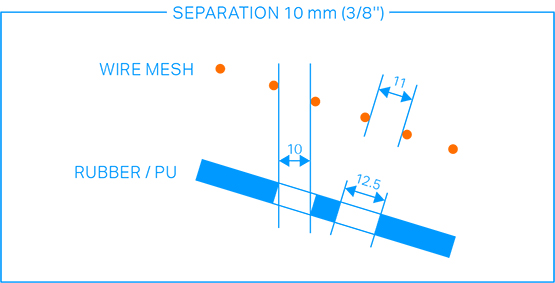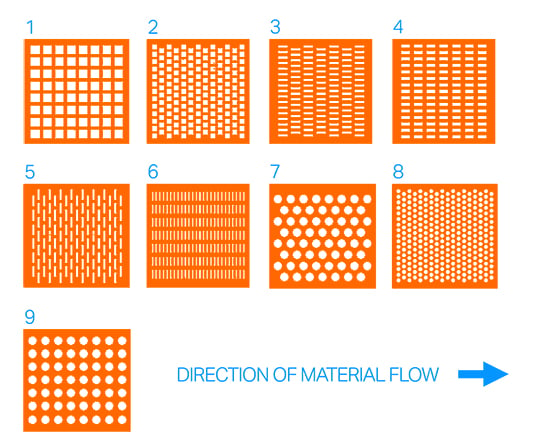Materials
The next decision to make involves the type of material used in the screen media. Most modern screen media is made from rubber, polyurethane, or steel – or some kind of combination of these elements. They all deliver unique qualities:
Rubber
Rubber is an especially useful material for screens that need to absorb impact, for example, in coarse screening.
There is a wide range of synthetic and natural rubbers available, all with unique characteristics. The hardness of the rubber (measured in shore A) is one of the key factors that determine its applicability. Harder rubbers (around 60 shore) absorb impact and have a long wear life, while softer rubbers (around 40 shore) are more flexible, more resistant to abrasion, and less prone to blinding.
Polyurethane
Polyurethane also has a range of qualities. Thermoset polyurethane (typically open cast) is generally more durable and resistant to abrasion, whereas thermoplastic polyurethane (typically injection molded) is often used in washing screens or wet screens.
Steel
Steel is still commonly used in screening media, for example, in the woven wire mesh in tensioned screens. One advantage of this setup is that the steel wires are thin, which means that there are a lot of holes for undersize material to pass through. This media is also normally cheaper than rubber or polyurethane alternatives. On the negative side, it has a short wear life so is likely to be replaced every one to two weeks.
An often overlooked drawback of steel screening media is noise. Screens that use steel are considerably louder than rubber or polyurethane alternatives, so demand additional consideration of employee safety.
Steel is also used for the bars in grizzly screens, for punch plate screen panels, and to reinforce panels with rubber or polyurethane exteriors.

